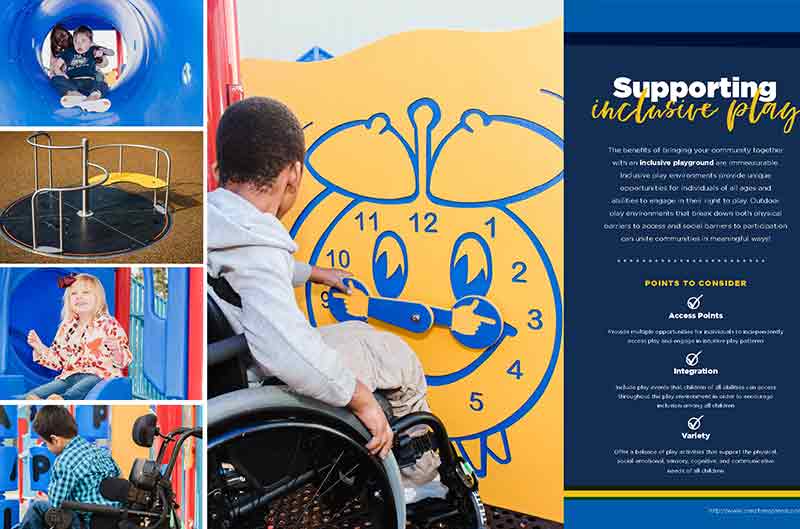
Designed for Everyone – Inclusive Playgrounds
Author: Austin Stanfel
As the saying goes, ‘Play is the work of the child’, and these days, kids don’t indulge in active play anymore, they’re instead on computers, tablets, and smartphones. Too much screen time is not only bad for kids’ weight management but detrimental to their mental, social, and physical health.
So, what can we do about it?
Provide more play opportunities! But it is not as simple as it sounds.
Why? Because at times, not every child gets to enjoy everything a school or community playground offers due to the mismatch between accessibility and inclusiveness.
An inclusive playground
Simply put, an inclusive playground is the one that is welcoming and fun for all children, regardless of their ability, age, or gender. What’s more, it also includes different levels and types of playground equipment, so no child is left out of the fun.
Such playgrounds not only promote the developmental aspects of children, but they also increase the chances of building connections, learning diversity, understanding acceptance, and developing tolerance.
How to design an inclusive playground
Below are some best practices that should be taken into consideration while building an inclusive playground, either from scratch or by remodeling an existing play area.
1. Include physical and sensory play
Physical play promotes early brain development and decreases the risk of developing chronic health conditions, says the North Carolina Child Care Health and Safety Resource Center. And the best ways to engage in physical play on the playground are through the use of swing seats, spinners, sensory wave climbers, and sensory cove climbers, etc.
2. Include age-appropriate equipment
Inclusiveness doesn’t mean age-appropriateness should be neglected. Age and different challenge levels should be factored in while deciding on activities. For instance, 3′, 4′, and 5′ slides should be made available for kids aged 2 to 5 years, whereas an 8′ slide should be included for children aged 5 to 12 years.
3. Music is an excellent addition
4. Communication is a key
Kids use different ways to communicate – pictures, vocalizations, gestures, speech, etc. But some kids with communication or language disability may have a tough time mixing with peers in the playground. Having pictures, visual supports, or props that help to engage in communicative exchanges with other kids can go a long way.
5. Cognitive Development
Activities such as swinging, climbing, playing on monkey bars, and sliding provides both physical and cognitive benefits. Additionally, bricks and blocks, number and alphabet boards, mazes, etc., can be included to keep the children sharp.
What else
It is also equally important that an inclusive playground should include something for everyone – for example, ramps and passageways that are age and height appropriate. Not to forget, it should be accessible by wheelchairs.
Here’s our final thought
Every child is unique. Parks or playgrounds shouldn’t limit or categorize them. It should be a place to encourage physical, emotional, and intellectual development, develop relationships, and learn from each other. And that’s exactly what inclusive playgrounds do.

